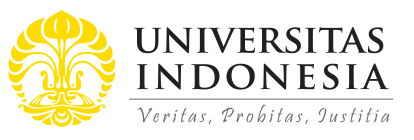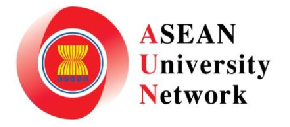
Abstract
Western Champa people are part of Cambodian and they moved to Cambodia because of the Vietnamese began to build their strength and suppress them to the neighborhood country. Although their kingdom were originally in Vietnam and some of Champa people/Eastern Champa still live and thrive there, and some of them were recorded to speak Austronesian language. Therefore their language is slightly similar to Bahasa Indonesia and both languages are categorized as Malayo-Chamic. Two similarities of these languages that will be further discussed in this research are the words boh [b?h] and talai [t?la?] for buah [buwah] and tali [t?li] that means “fruit” and “rope” respectively. Although the sound appears to be the same as bahasa Indonesia, the categorizations using these words are uniquely different. The word chim [t??m] is also the object of research discussion because of its unique use for categorizing birds and insects. This research is aimed to explore the uniqueness of bahasa Cham in categorizing animal, vegetables and fruits, and things and try to discover the reason behind those categorizations that are triggered mostly by metonymy. The method of this research is participant observation and interview while teaching Bahasa Indonesia for four months in Cambodia for BIPA program.
References
Agre, A P., Gueye, B., Adjatin, A., Dansi, M., Bathacharjee, R., Rabbi, I. Y., & Gedil, M. (2016). Folk taxonomy and traditional management of cassava (Manihot esculenta Crantz) diversity in southern and central Benin. International Journal of Innovation and Scientific Research, 20 (2), 500-515.
Ahearn, L. M. (2017). Living language: An introduction to linguistic anthropology. West Sussex: Willey Blackwell.
Balkhimbekova, P. Z., Kossymova, G. S., & Markova, E. M. (2016). Semantic and cognitive specificity of english verbs to destroy, to demolish, to ruin and their equivalents in russian translation. The Social Sciences 11 (16), 3914-3919.
Baydak, A. V., Scharioth, C., & Ilyashenko, A. A. (2015, June 09-11). Interaction of language and culture in the process of international education. Paper presented at the International Conference for International Education and Cross-cultural Communication, Tomsk Polytechnic University, Tomsk, Russia.
Berlin, B., Breedlove, D. E., & Raven, P. H. (1974). Principles of Tzeltal plant classification: An introduction to the botanical ethnography of a Mayan-speaking people of highland chiapas. New York: Academic Press.
Berlin, B. (1992). Ethnobiological classification: Principles of categorization of plants and animals in traditional societies. Oxford: Princeton University Press.
Blust, R. (2013). The austronesian languages. Canberra: Asia Pacific Linguistics.
Chaer, A. (2008). Morfologi bahasa indonesia. Jakarta: Rineka Cipta.
De Deyne, S., Kennet, Y. N., Anaki, D., Faust, M., & Navarro, D. J. (2016). Large scale network representations of semantics in the mental lexicon. In M. N. Jones (Ed.) Cognitive Science: From Method to Insights (pp. 174-202). Psychology Press.
Evans, V., Bergen, B. K., & Zinken, J. (2007). The cognitive linguistics enterprise: An overview. In V. Evans & J. Zinken (Eds). The Cognitive Linguistics Reader (pp. 2-36). London: Equinox.
Evans, V., & Green, M. (2006). Cognitive linguistics: An introduction. Edinburgh: Edinburg University Press.
Geeraerts, D. (2010). Theories of lexical semantics. New York: Oxford University Press.
Griffith, P. (2006). An introduction English semantics and pragmatics. Great Britain: Edinburgh University Press.
Kovecses, Z. (2010). Metaphor: A practical introduction. New York: University of Oxford.
Kosecki, K. (2014). On prototype-related metonymic models in signed languages. Kwartalnik Neofilologiczny, 61 (3), 511-527.
Krawiec, M. (2012). Language as a mirror of cultural stereotypes-An ethnolinguistic perspective. Acta Neophilologica 14 (2), 47-88.
Ladefoged, P., & Johnson, K. (2011). A course in phonetics. Canada: Wadsworth Cengage Learning.
Littlemore, J. (2015). Metonymy: Hidden shortcuts in language, thought, and communication. Cambridge: Cambridge University Press.
Moleong, L. J. (2015). Metodologi penelitian kualittatif. Bandung: PT. Remaja Rosda Karya.
Morse, S. J. G. (2015). Folk taxonomy in Anishinaabemowin: A linguistic approach (thesis). Retrieved June 11, 2018, from https://search.proquest.com/openview/16c9bd7fac46d48d314a7572994ff981/1?pq-origsite=gscholar&cbl=18750&diss=y
Musa, M. Z. (2011). Diaspora Melayu Cam. Kuala Lumpur: Persatuan Sejarah Malaysia
Musa, M. Z., & Shuhaimi, N. H. (2006). The cham community through the ages. Malaysia: Ikatan Ahli-Ahli Arkeologi Malaysia.
Radden, G., & Kövecses, Z. (2007). Towards a theory of metonymy. In V. Evans, B. K. Bergen, & J. Zinken (Eds.), The Cognitive Linguistics Reader (pp. 335-359). London: Equinox.
Radden, G. (2008). The cognitive approach to language. In J. Andor, B. Hollósy, T. Laczkó, & P. Pelyvás (Eds.) When Grammar Minds Language and Literature: Festschrift for Prof. Béla Korponay on the Occasion of his 80th Birthday, 387-412. Debrecen: Institute of English and American Studies.
Riemer, N. (2010). Introducing semantics. New York: Cambridge University Press.
Rouhan, G., & Gaudeul, M. (2014). Plant taxonomy: A historical perspective, current challenge, and perspective. In P. Basse (Ed.) Molecular plant taxonomy: Methods and protocols (pp. 1-37). New York: Humana Press.
Simpson, G. G. (1961). Principle of animal taxonomy. New York: Columbia University Press.
Thurgood, G. (1999). From ancient Cham to modern dialects: Two thousand years of language contact and change. Honolulu: University of Hawai’i Press.
Ueda, Y., Ito, S., & Higuchi, H. (2016). Folk taxonomy and uses of non-Indica Mangoes (Mangifera spp.) in Java island. Tropical Agriculture and Development, 60(3), 200-203.
Ungerer, F & Schmid, H. J. (2006). An introduction to cognitive linguistics. Malaysia: Pearson Longman.
Van Gelderen, E. (2010). An introduction to the grammar of English. Philadelphia: John Benjamins Publishing Company.
Wales, K. (2011). A dictionary of stylistics. New York: Routledge.
Recommended Citation
Kurniawan, Muhammad Hafiz
(2018).
Folk categorizations of western Champa in Cambodia: A cognitive linguistics study.
ASEAN Journal of Community Engagement, 2(1).
Available at: https://doi.org/10.7454/ajce.v2i1.114







